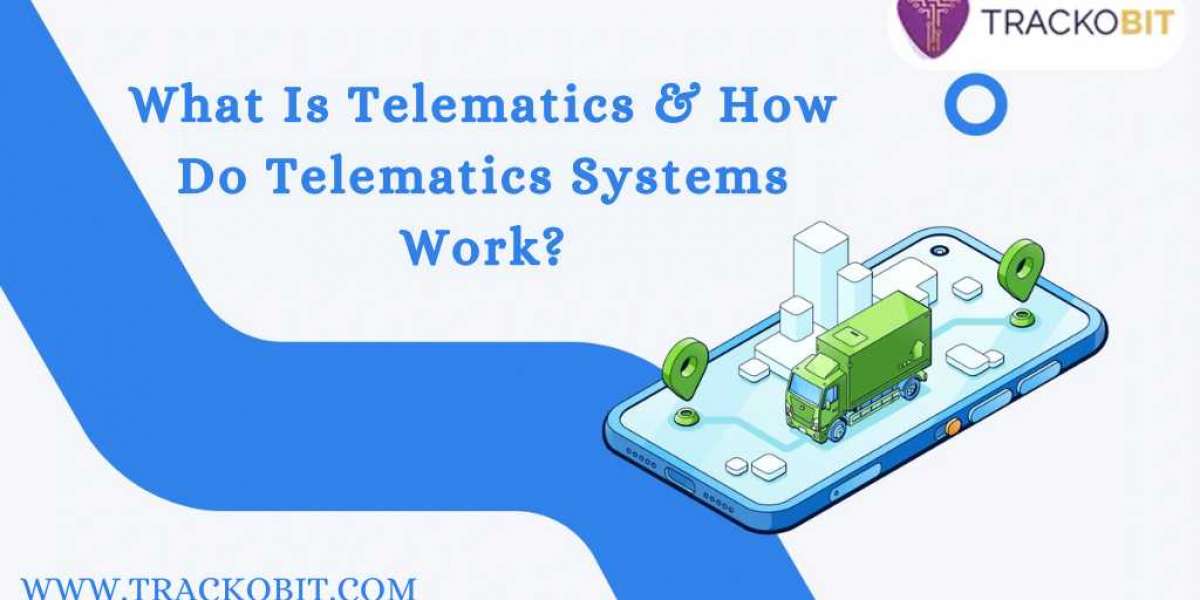Fleet management is not something that can be done easily. After all, it doesn’t only mean that you have to keep your vehicles running on roads. But fleet managers should work on it in a way that helps your business with profit. It is possible when your vehicles are using less fuel.
This way your company is saving money.
Or, your vehicle is completing more work in a single day. This means improved efficiency. And there are many more other things. But doing all this manually? How is that possible? Well, you got it right. It isn’t and that’s why telematics systems are so in demand. These systems give you real-time insights into your fleet.
No matter if you have a logistics company or you are supposed to deliver orders to customers. In all cases, telematics solutions help. But what exactly is telematics? How does it work? And why should fleet managers invest in it? Let’s find out together.
Telematics Systems: What Is It?
Telematics means telecommunications and data analytics. It tracks and monitors vehicles (or any other assets.
A telematics system collects data from vehicles and transmits it to a cloud-based platform. This gives fleet managers information.
In other words, with a telematics solution-
- You can track the location of the vehicle
- You can keep an eye on the use of fuel in your vehicles
- Also, you can find out if the drivers are doing their work properly or not
It helps fleet managers make smart decisions, lessen costs, and improve work efficiency. In short, it changes fleet management into a data-driven process.
How Do These Telematics Systems Work?
A telematics system uses GPS technology, onboard diagnostics, and wireless communication to gather and send vehicle data.
First, a telematics device is installed in the vehicle to collect important data such as fuel use, location, engine performance, and driving habits. This data is then sent through cellular networks or satellites to a cloud-based platform.
Once the data reaches the platform, the system processes it with advanced algorithms to find patterns and possible problems.
Fleet managers can easily access this information through dashboards and reports on any device. This helps them to see what's happening with their vehicles in real time.
With these insights, decisions can be made to improve routes, reduce fuel use, and increase driver safety.
Basically, telematics helps businesses track their vehicles, spot issues, and boost productivity.
Features Given by Advanced Telematics Solutions
Not all telematics systems are the same. The best ones go beyond simple tracking. To put it simply, your fleet managers can control it completely.
Let's read some key features of advanced telematics solutions:
- 24/7 tracking of vehicles
Knowing where your vehicles are at all times is important for fleet management. GPS fleet tracking software helps fleet managers track vehicles. They can also plan routes if using advanced software. This improves delivery times.
With real-time tracking, you can monitor each vehicle's location. You can also check if drivers follow assigned routes, and respond quickly to delays. Alerts notify you if a vehicle enters a restricted area, helping you prevent unauthorized use.
- Video telematics feature for safer driving
Driver safety is a top priority. Video telematics software records driving behavior. This helps fleet managers notice reckless actions like harsh braking, rapid acceleration, and distracted driving.
AI-powered alerts warn drivers in real time. This prevents accidents. This feature is especially useful for businesses that prioritize safety and want to lessen insurance costs.
- Fuel monitoring cost optimization
Fuel is a big part of fleet costs. Advanced telematics solutions monitor fuel use, find inefficiencies, and help stop fuel theft.
Fuel reports show where fuel is being wasted. You can check how much time vehicles spend idling, change routes, and ensure vehicles run efficiently. These small changes can lead to big savings over time.
- Driver behavior monitoring for driver and vehicle safety
Unsafe driving leads to higher costs and more accidents. Driving habits like speed, sudden stops, and quick acceleration are tracked by a telematics system.
Driver scorecards are used to check performance, and help is given where needed. Safe driving is encouraged to keep the roads safer and vehicles are made to last longer.
- Maintenance alerts diagnostics
Unexpected breakdowns can lead to costly delays. Vehicle diagnostics are tracked by telematics systems, which alert fleet managers when maintenance is needed.
Instead of waiting for a breakdown, proactive maintenance can be scheduled. This helps reduce downtime and avoids expensive repairs. Regular servicing keeps vehicles in good condition and makes the fleet more reliable.
Additionally, companies can also integrate telematics into their existing systems.
Telematics is also playing a big role in sustainability. Many businesses are using telematics to lessen fuel use and lower carbon emissions.
In case you are looking for robust software, check out TrackoBit.
Final Words
Telematics systems have made fleet management simple. These white label telematics solutions help businesses lessen costs and boost efficiency.
From GPS fleet tracking software to video telematics software, telematics solutions give fleet managers all necessary information.
So, if you want better control over your fleet, investing in a telematics system is a smart move. Hope this article helps.







